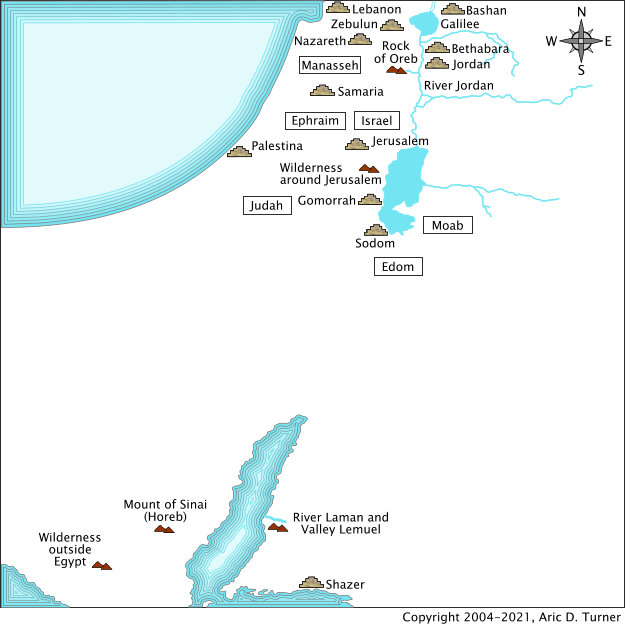The land of promise is located on the opposite side of the river Jordan as the wilderness outside Egypt. The Bible names the land across the river Jordan as the land of Canaan.
Commentaries (
view it on a map)
I NEPHI 5:117 [17:32]: And after they had crossed the river Jordan, he did make them mighty, unto the driving out the children of the land, yea, unto the scattering them to destruction.
Commentary: This verse references the places of the land of promise and the river Jordan. The term 'they' refers to Moses and the people of Israel. The term 'land' refers to the land of promise. Moses and the people with him had been in the wilderness outside of Egypt, so the journey through the wilderness put Moses and his people on the opposite side of the river Jordan than the land of promise. This verse also illustrates the consistency of using the term 'cross' to indicate water.
I NEPHI 5:118 [17:33]: And now do ye suppose that the children of this land, who were in the land of promise, who were driven out by our fathers, do ye suppose that they were righteous? Behold, I say unto you, Nay.
Commentary: This verse references the place of the land of promise, river Jordan, and the wilderness outside Egypt. This verse names the land across the river Jordan from the wilderness outside Egypt as the land of promise.
I NEPHI 5:137 [17:42]: Nevertheless, ye know that they were led forth by his matchless power into the land of promise.
Commentary: This verse references the places of Egypt, the land of promise, and the wilderness outside Egypt. The term 'they' refers to the children of Israel. The term 'his' refers to Moses. The phrase 'into the land of promise' names the land of promise, that the land of promise is outside of Egypt, and also identifies that the route of travel to the land of promise is through the wilderness outside of Egypt. The boundaries of the Land of Promise is based on descriptions in Numbers 34 and Ezekiel 47 [
commentary].
Map




Land of Promise








